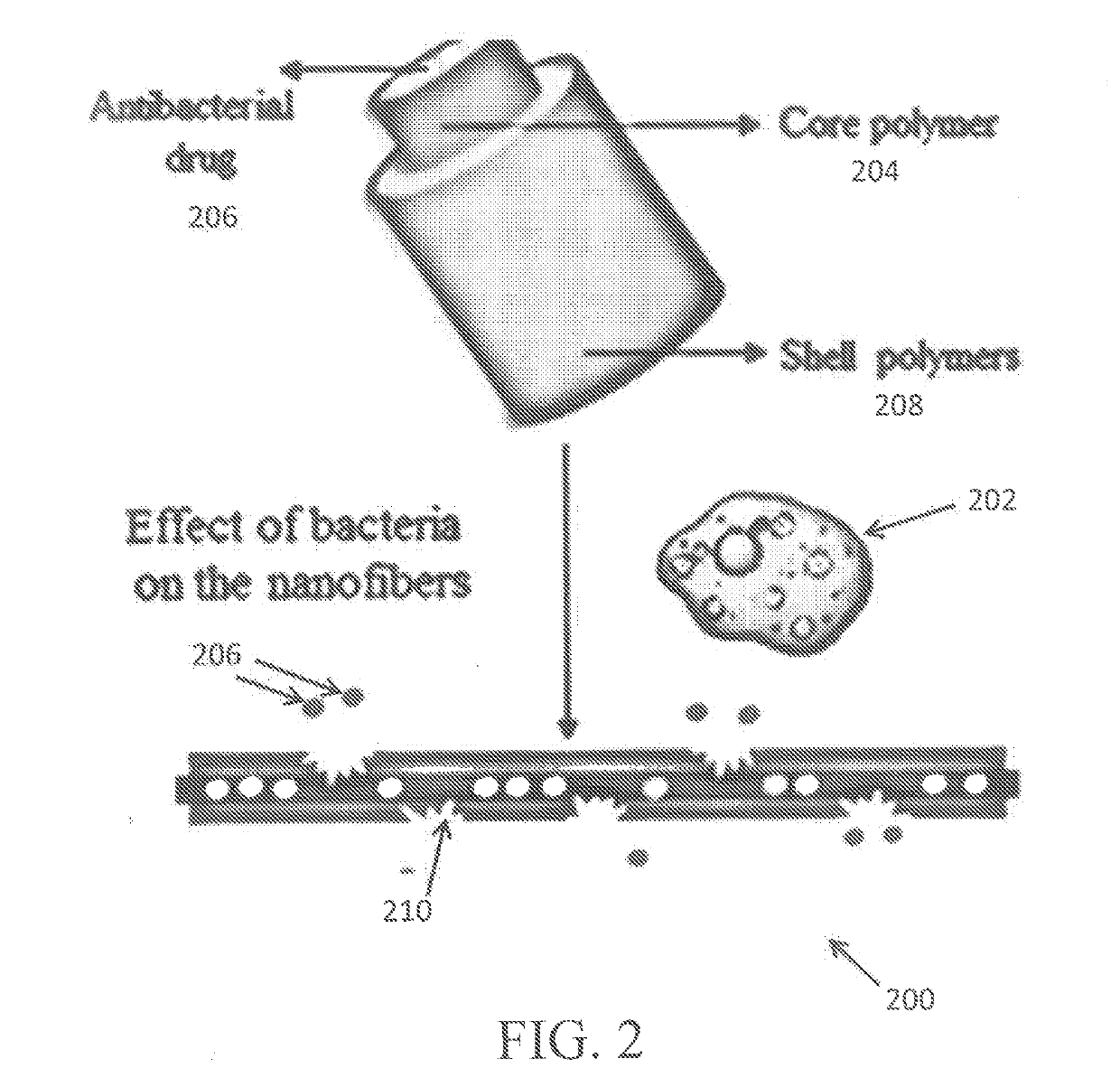Antibacterial nanofiber
a nanofiber and antibacterial technology, applied in the field of antibacterial materials, can solve the problems of unfavorable treatment effect, unfavorable treatment effect, and unfavorable treatment effect, and achieve the effect of reducing at least one disadvantag
- Summary
- Abstract
- Description
- Claims
- Application Information
AI Technical Summary
Benefits of technology
Problems solved by technology
Method used
Image
Examples
example 1
[0046]Bacteria-Responsive Nanofibers for On-Demand Release of Antibacterial Agents to Address Wound Infections
[0047]Abstract.
[0048]Nanofibers have been used as biocompatible materials for wound healing in recent years. In this example, core-shell nanofibers are prepared and used to provide triggered release of an antibacterial agent. Due to bacterial activity, such as lipase secretion and acidification of pH, degradation of the shell material was facilitated and resulted in the release of an incorporated antibacterial agent present in the core of the nanofiber. Bacteria triggered release of an antibacterial agent can advantageously replace other antibacterial strategies that deploy unneeded release of antibacterial agents and which may result in cytotoxicity to a subject. The nanoscopic and core-shell structure of the nanofibers were finely confirmed by scanning electron microscopy (SEM) and transmission electron microscopy (TEM). Due to bacterial activity, nanofibers were degraded ...
PUM
| Property | Measurement | Unit |
|---|---|---|
| pH | aaaaa | aaaaa |
| voltage | aaaaa | aaaaa |
| voltage | aaaaa | aaaaa |
Abstract
Description
Claims
Application Information
 Login to View More
Login to View More - R&D
- Intellectual Property
- Life Sciences
- Materials
- Tech Scout
- Unparalleled Data Quality
- Higher Quality Content
- 60% Fewer Hallucinations
Browse by: Latest US Patents, China's latest patents, Technical Efficacy Thesaurus, Application Domain, Technology Topic, Popular Technical Reports.
© 2025 PatSnap. All rights reserved.Legal|Privacy policy|Modern Slavery Act Transparency Statement|Sitemap|About US| Contact US: help@patsnap.com



